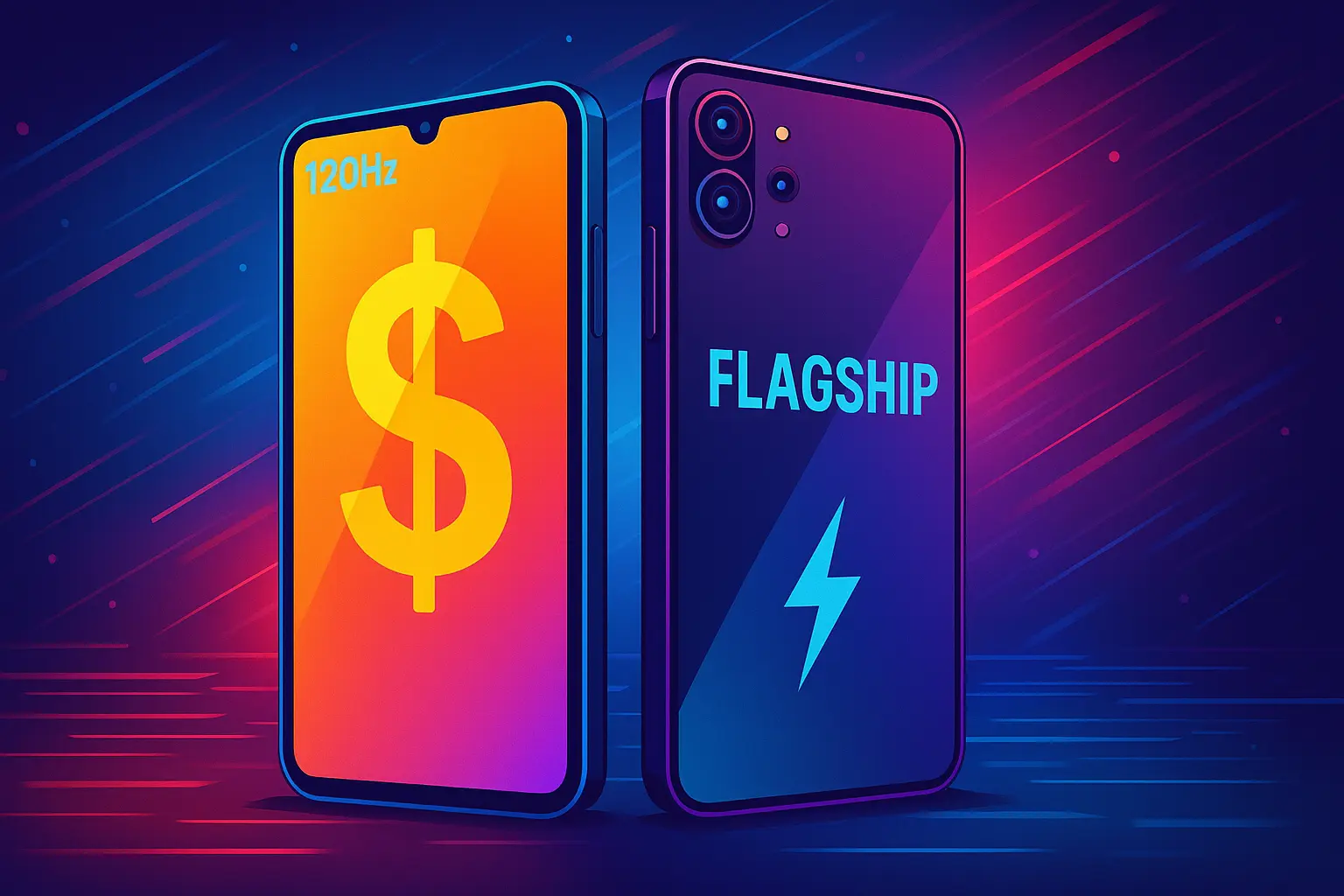Introduction
Smartphone technology has evolved rapidly over the past decade, and the market is now witnessing a major shift. Mid-range smartphones are increasingly outselling flagship models, signaling a change in consumer priorities. With powerful hardware, high-end features, and competitive pricing, mid-range smartphones offer a compelling alternative to premium flagship devices.
In this article, we will explore why mid-range smartphones are dominating flagship sales, the factors contributing to their rise, and how this shift is shaping the future of the smartphone industry.
1. The Rise of Mid-Range Smartphones
1.1 Definition of Mid-Range Smartphones
Mid-range smartphones typically fall between budget and flagship devices in terms of price and features. They offer a balance between performance, design, and affordability, making them a popular choice for consumers who want a good smartphone experience without breaking the bank.
1.2 Key Features of Mid-Range Smartphones
Modern mid-range smartphones come equipped with features that were once exclusive to flagship models, such as:
- High-Refresh-Rate Displays (90Hz to 144Hz AMOLED panels)
- Multiple Camera Setups with AI enhancements
- Powerful Processors (Snapdragon 7/8 series, Dimensity 8000 series)
- Fast Charging & Large Batteries (5000mAh+ with 30W-120W fast charging)
- 5G Connectivity & AI Features
- Premium Build Quality with Glass or Metal Frames
These advancements blur the lines between mid-range and flagship devices, giving users an exceptional experience at a fraction of the price.
2. Why Mid-Range Smartphones Are Outselling Flagships
2.1 The Rising Cost of Flagship Smartphones
Flagship smartphones from brands like Apple, Samsung, and Google often exceed $1000. With each new iteration, prices continue to rise, making premium devices less accessible for the average consumer.
2.2 Price-to-Performance Ratio
Mid-range devices now offer 80-90% of the flagship experience at half the price. The minor differences in performance, camera quality, and premium build are not significant enough for most users to justify spending extra on a flagship.
2.3 Value-Conscious Consumers
Consumers today are more value-conscious. With inflation and economic uncertainties, people prefer practical investments. A $500-$700 smartphone that delivers near-flagship performance is a smarter purchase than a $1200 device with only marginal improvements.
2.4 Longer Smartphone Upgrade Cycles
As smartphone technology matures, users are holding onto their devices longer. Flagship innovations have slowed, making mid-range devices a practical alternative that can last 3-4 years without significant compromises.
2.5 Improved Software & Longevity
Many mid-range devices now receive 3-4 years of Android updates and security patches, which was once exclusive to flagships. This extends the lifespan of mid-range phones, making them an even more attractive option.
2.6 Carrier and Financing Plans
Many mid-range phones are available through financing and carrier deals, making them more accessible. Brands like Samsung and Google offer attractive trade-in programs that make upgrading affordable without needing to buy a flagship.
3. How Smartphone Brands Are Adapting to This Trend
3.1 Focus on the Mid-Range Segment
Major smartphone brands have shifted focus towards the mid-range market:
- Samsung Galaxy A & M Series
- Google Pixel A Series
- OnePlus Nord Series
- Xiaomi Redmi & POCO Series
- Apple iPhone SE (Targeting budget-conscious iOS users)
These brands are aggressively marketing their mid-range phones as the best value options in the market.
3.2 Cutting Costs Without Compromising Too Much
Smartphone manufacturers are using cost-effective materials, optimizing software, and leveraging economies of scale to offer competitive mid-range phones without sacrificing too many features.
3.3 AI and Computational Photography
AI-driven photography is bridging the gap between mid-range and flagship cameras. Google’s Pixel A series and Samsung’s Galaxy A models use AI-enhanced software to deliver flagship-like camera performance at a lower price.
4. The Future of the Smartphone Market
4.1 Will Flagships Become Niche?
Flagship smartphones are still relevant, but they are increasingly becoming niche products aimed at tech enthusiasts, gamers, and professional content creators. Their market share will likely shrink as mid-range phones continue to improve.
4.2 The Role of Emerging Technologies
Future mid-range phones may adopt emerging technologies such as:
- AI-powered voice assistants & automation
- More efficient & powerful chipsets
- Foldable designs at mid-range prices
- Advanced computational photography
4.3 Sustainability & Repairability
With growing concerns about e-waste, brands may focus on more sustainable and repairable designs. This could further boost mid-range smartphone sales as consumers look for longevity over premium aesthetics.
Conclusion
Mid-range smartphones have changed the dynamics of the smartphone industry. They provide flagship-like performance, essential premium features, and extended software support at a reasonable price. As consumers prioritize value over prestige, mid-range devices will continue to dominate the market, leaving flagship sales to niche audiences.
With brands focusing on innovation in the mid-range segment, we can expect even better smartphones at competitive prices in the future. Whether you’re a casual user, gamer, or content creator, there’s a mid-range smartphone that delivers everything you need without the flagship price tag.
What’s your take?
Would you choose a mid-range phone over a flagship? Let us know in the comments! 🚀

